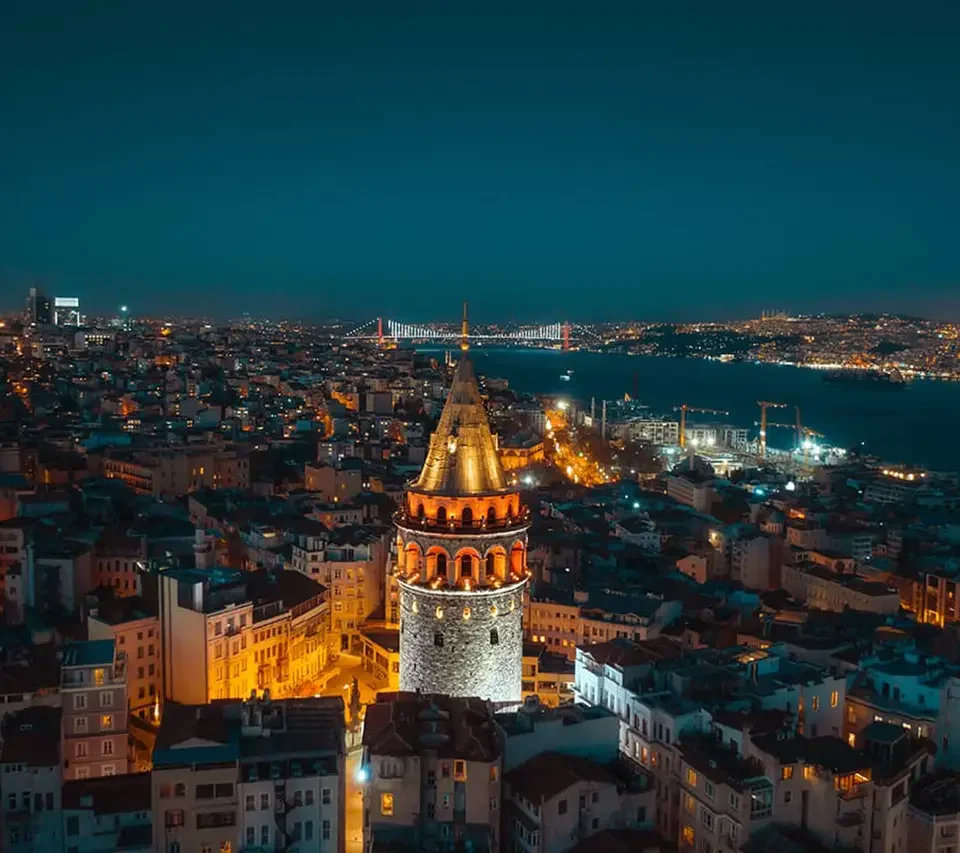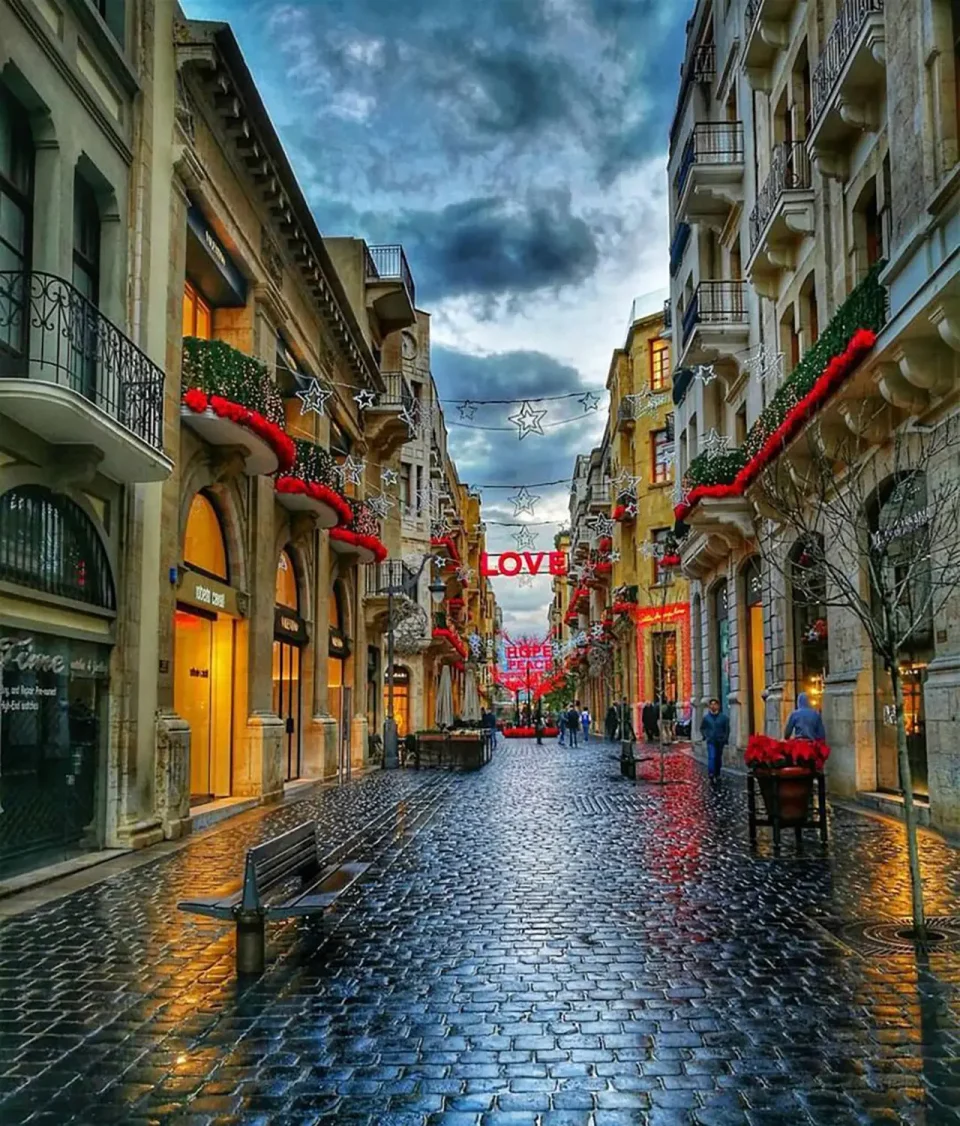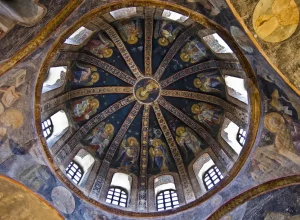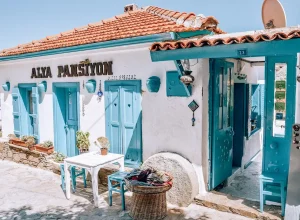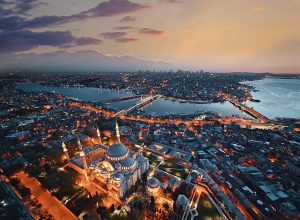Dive into the fascinating history, architecture, and cultural significance of Istanbul’s Galata Tower. Explore its origins, restoration efforts, and the breathtaking panoramic views that continue to captivate visitors from around the world.
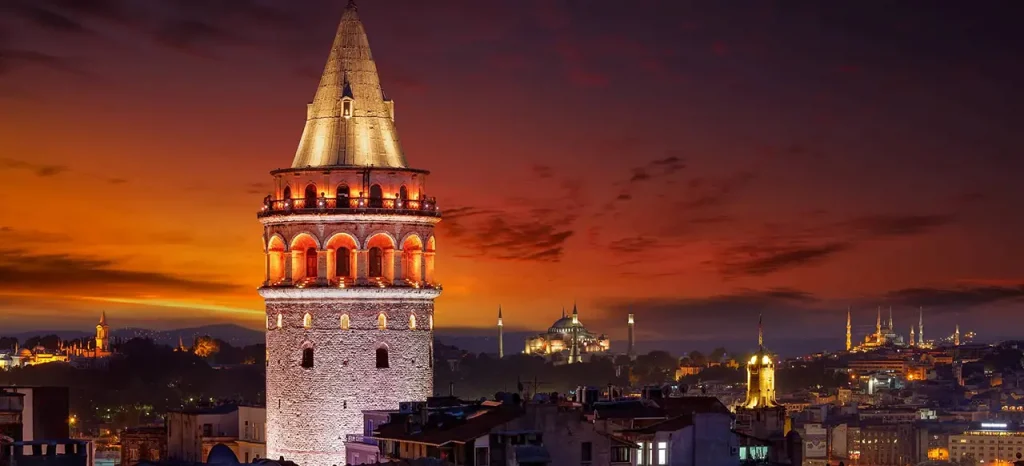
Table of Contents
A Timeless Icon of Istanbul
Istanbul, a city steeped in rich history and vibrant culture, is home to numerous iconic landmarks. Among these, Galata Tower stands tall, both as a symbol of Istanbul’s past and as a beacon for travelers seeking unforgettable experiences. In this comprehensive guide, we will unravel the history, architectural beauty, and cultural significance of this majestic tower, and discover why it remains a must-visit destination.
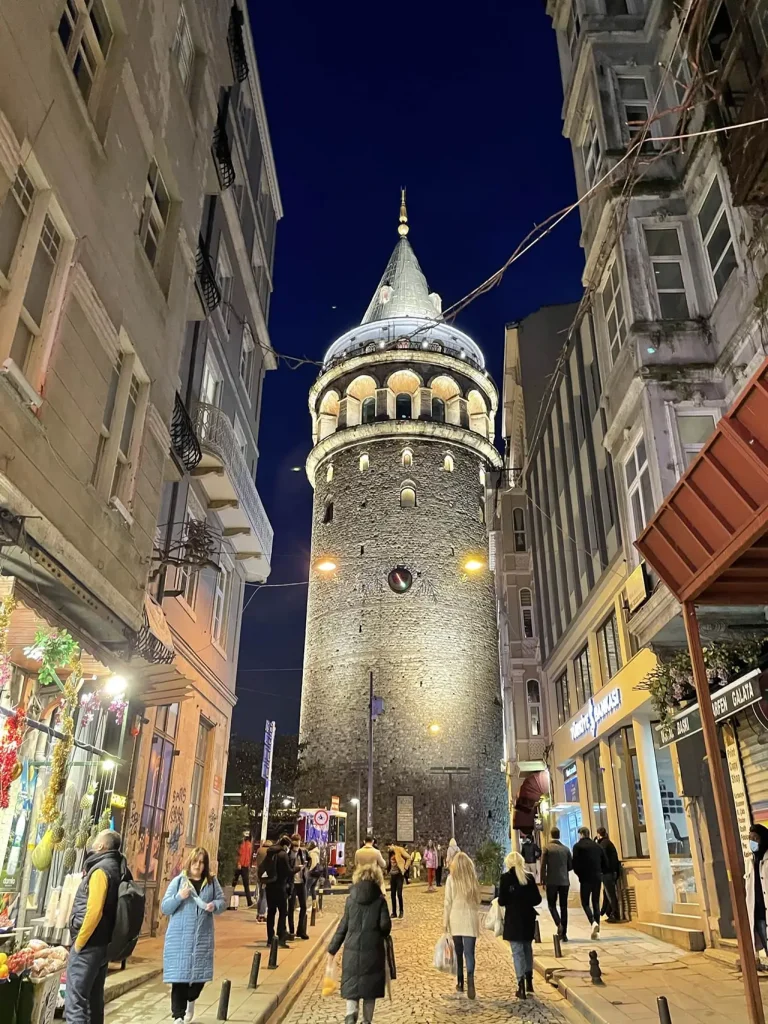
A Glimpse into the Origins of Galata Tower
Constructed in 1348, the Galata Tower, or Christea Turris (Tower of Christ), as it was initially called, was built by the Genoese colony as a part of the defense walls surrounding their district. The tower served as a watchtower and a gateway, playing a crucial role in the defense of Constantinople.
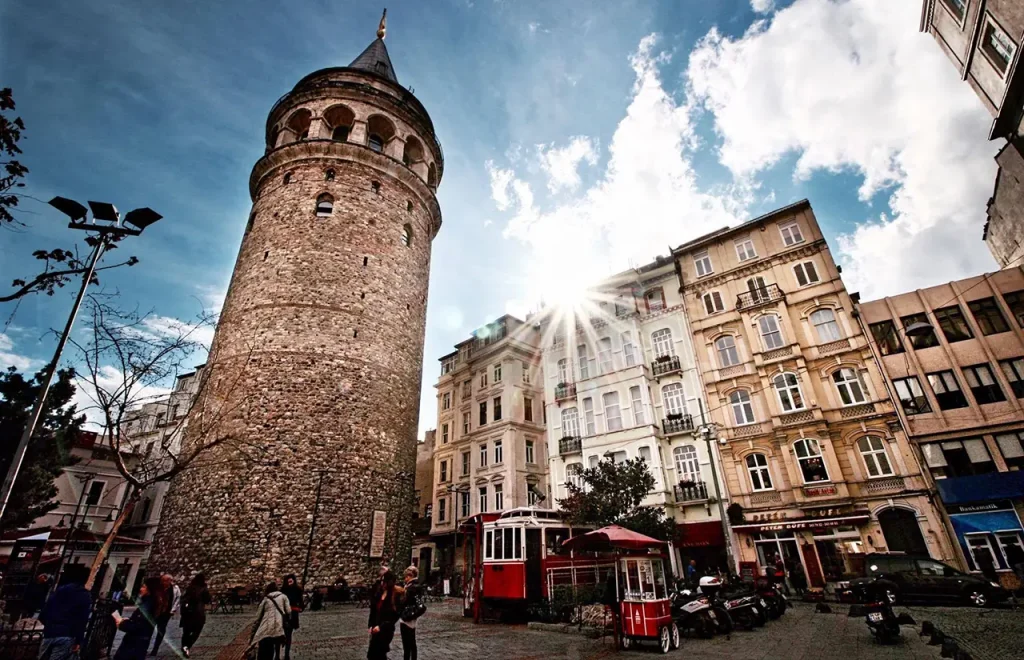
Over the centuries, the tower has withstood wars, fires, and earthquakes. Its purpose has also evolved, serving as a jail, an observatory, and a fire lookout post. Today, the tower stands as a prominent symbol of Istanbul’s resilience, and its fascinating history attracts thousands of visitors each year.
The Architectural Marvel of Galata Tower
The Galata Tower showcases a stunning example of medieval architecture. This cylindrical structure, made of stone and brick, soars to a height of 219 feet (67 meters), with a diameter of 52 feet (16 meters) at its base. The tower’s conical roof adds to its unique charm and allure.
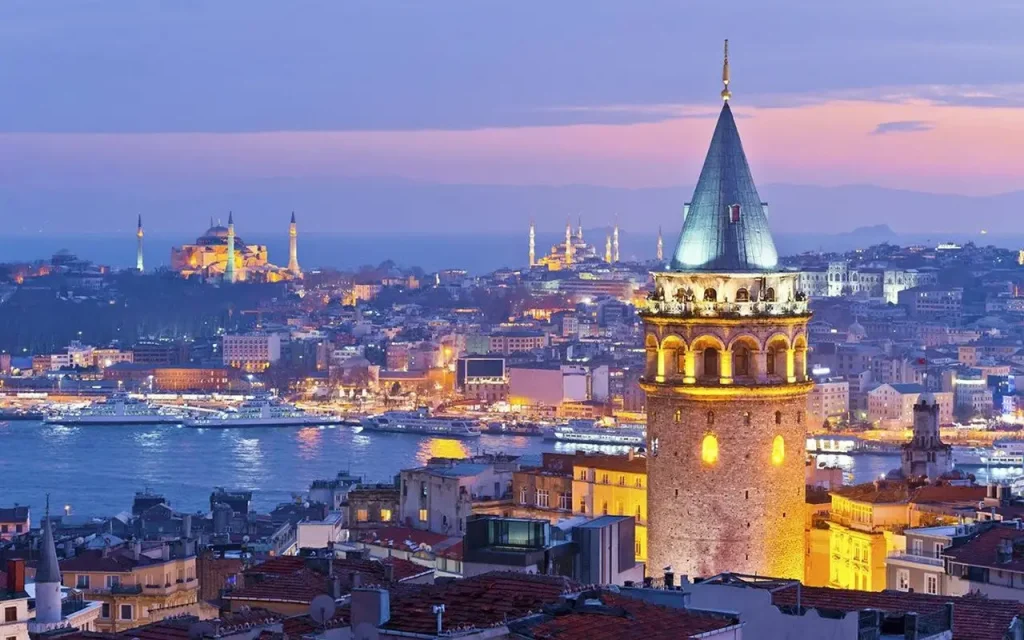
A spiraling staircase with 143 steps leads to the top of the tower, where an observation deck offers 360-degree views of Istanbul. From this vantage point, visitors can admire the city’s skyline, the Bosphorus, the Golden Horn, and several other historical landmarks.
The Restoration and Revival of Galata Tower
Over the years, Galata Tower has undergone numerous restorations to preserve its structural integrity and historical significance. The most notable of these was the 1960s restoration, which saw the removal of the conical roof added during the 19th-century Ottoman period. The tower’s current conical roof, made of lead, is a replica of the original one.
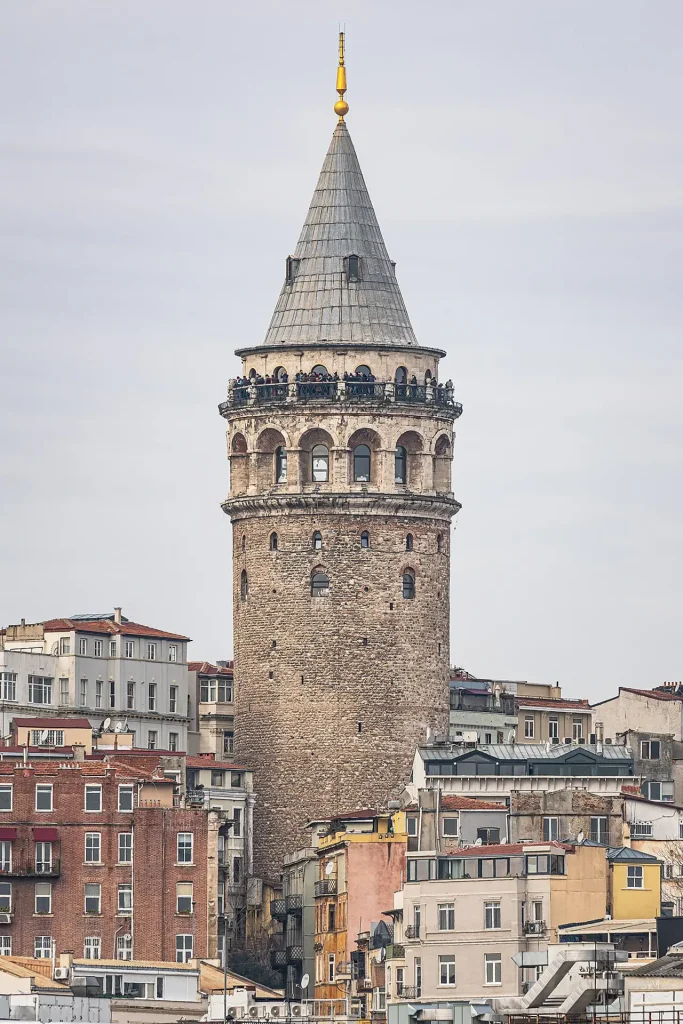
Recent restoration efforts have focused on preserving the tower’s exterior, improving accessibility, and enhancing the visitor experience. The latest restoration, completed in 2020, involved a thorough cleaning, structural reinforcements, and the installation of new lighting.
The Significance of Galata Tower
Galata Tower is not only an architectural gem but also a cultural treasure. It is a testament to the city’s rich history, symbolizing the fusion of Byzantine, Genoese, and Ottoman influences that have shaped Istanbul’s identity. The tower has also inspired countless legends and stories, such as the tale of Hezarfen Ahmet Çelebi, who is said to have flown from the tower to Üsküdar using wings made of eagle feathers.
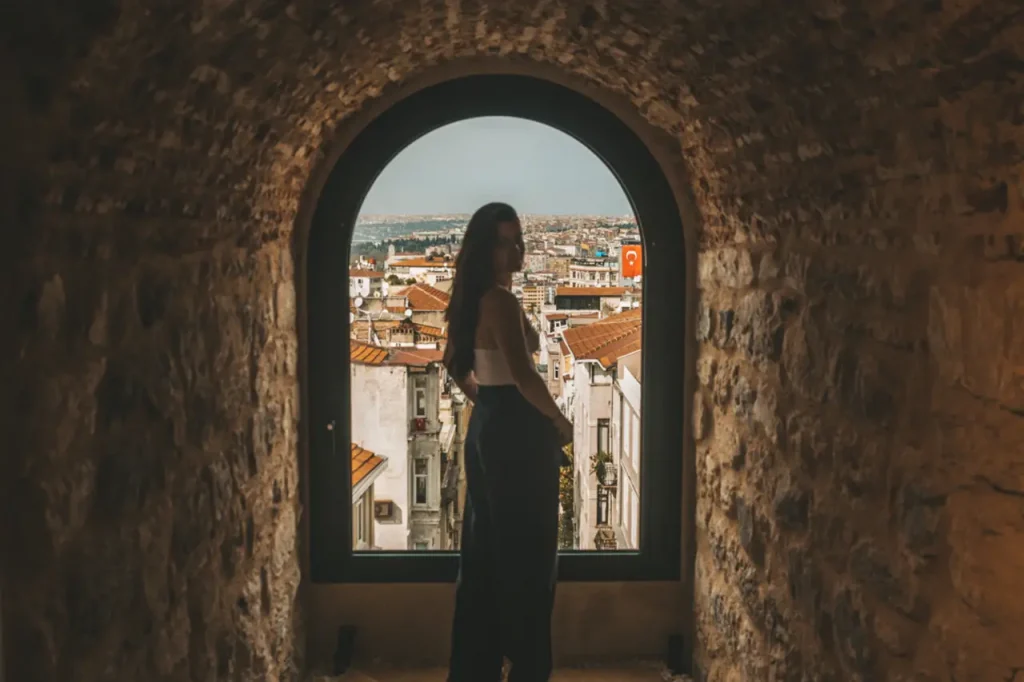
The area surrounding the tower, known as Galata or Karaköy, is a lively neighborhood brimming with art galleries, boutiques, cafés, and historic buildings. A visit to Galata Tower is incomplete without exploring this vibrant district, which offers a unique blend of old-world.
Tips for Visiting the Galata Tower
Make the most of your visit to Istanbul’s iconic Galata Tower with these top tips. From the best time to visit to explore the surrounding neighborhood, this guide has everything you need to plan a memorable experience.
Tip 1: Choose the Right Time to Visit
To avoid long queues and large crowds, plan your visit to Galata Tower during off-peak hours, preferably early in the morning or later in the afternoon. Keep in mind that the tower is open daily from 9:00 AM to 7:00 PM (local time may vary).
Tip 2: Take Advantage of the Istanbul Tourist Pass
Consider purchasing the Istanbul Tourist Pass, which grants access to numerous attractions in the city, including the Galata Tower, Hagia Sophia, Topkapi Palace, and many others. The pass can save you money and time by allowing you to skip lines at popular sites.
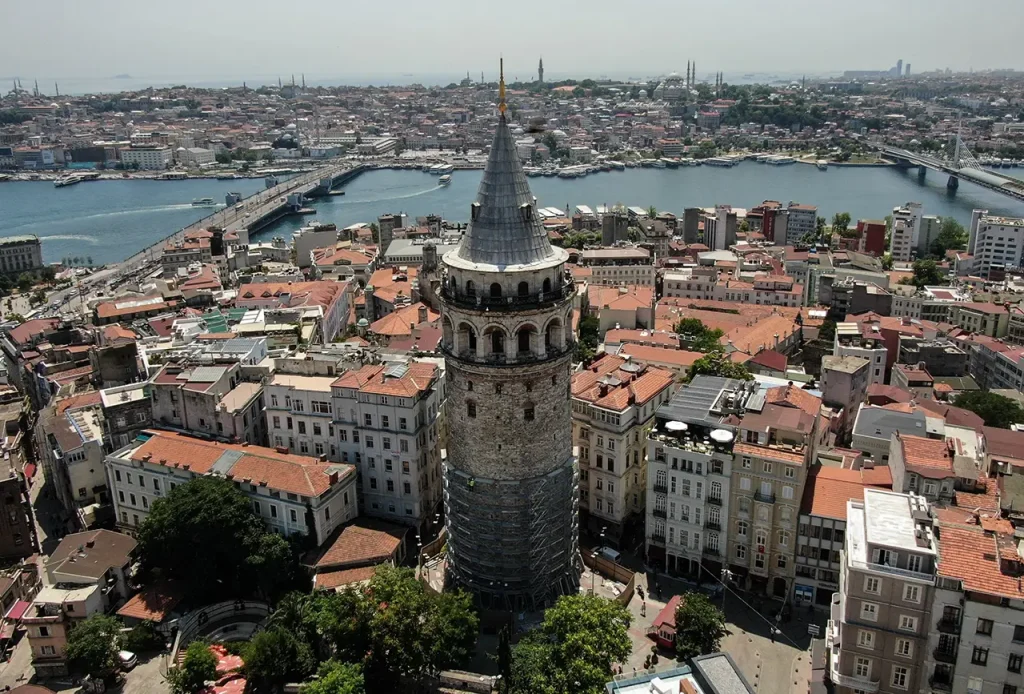
Tip 3: Wear Comfortable Shoes
As you will need to climb 143 steps to reach the observation deck, make sure to wear comfortable shoes. The staircase is narrow and steep, so take your time and be mindful of other visitors as you ascend.
Tip 4: Bring a Camera for Stunning Panoramic Views
Don’t forget to bring your camera or smartphone, as the observation deck offers breathtaking 360-degree views of Istanbul. Capture the skyline, the Bosphorus, the Golden Horn, and other historic landmarks from this unique vantage point.
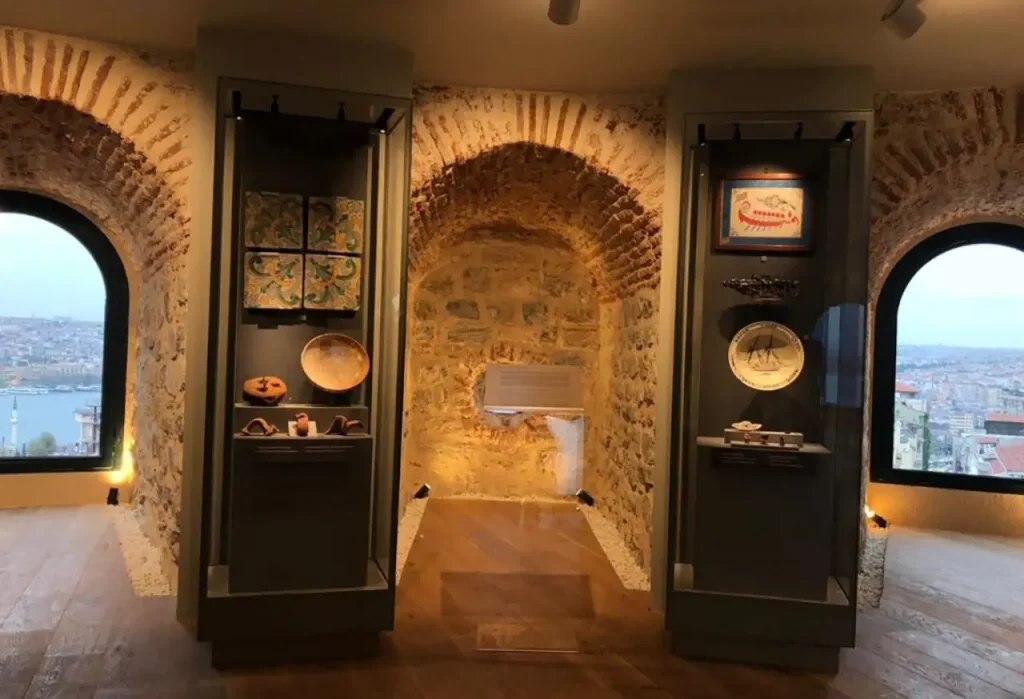
Tip 5: Allocate Time to Explore the Galata Neighborhood
Galata Tower is situated in the vibrant Galata or Karaköy district, which is filled with art galleries, boutiques, cafés, and historic buildings. Allocate time to explore the neighborhood, soak in the atmosphere, and discover hidden gems.
Tip 6: Visit Nearby Attractions
While you’re in the area, consider visiting other nearby attractions, such as the Galata Mevlevi House Museum, the Church of St. Anthony of Padua, and the Museum of Innocence. Each site offers a unique glimpse into Istanbul’s rich history and culture.
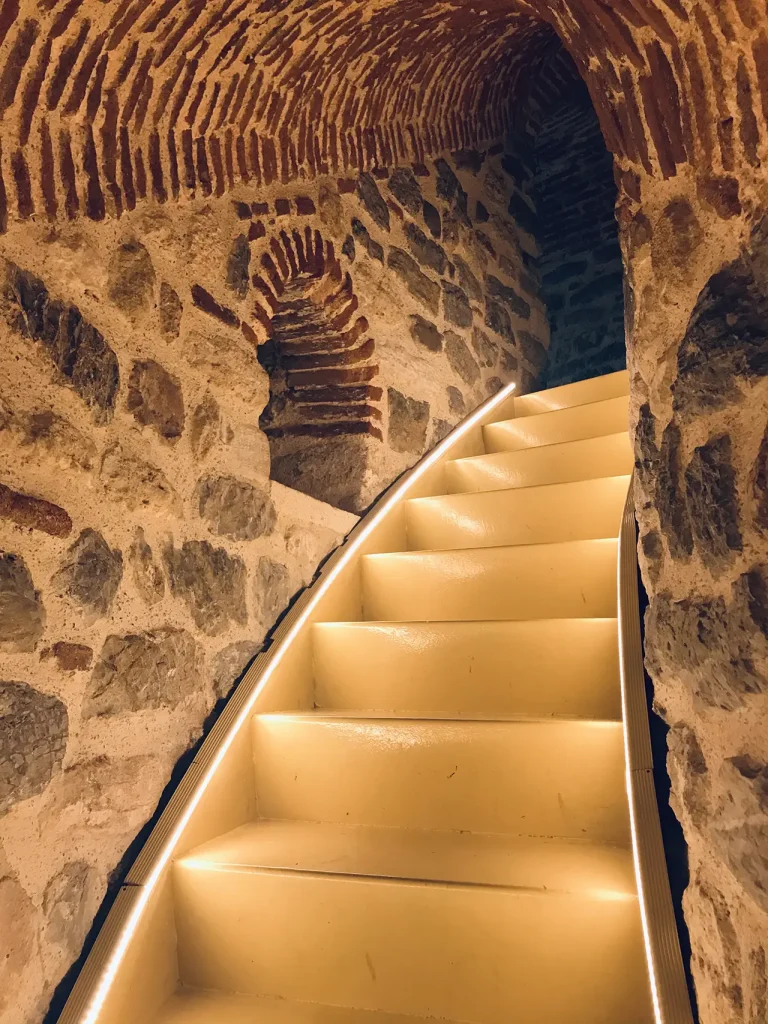
Tip 7: Enjoy Local Cuisine
Take a break and treat yourself to some delicious Turkish food in the Galata neighborhood. From traditional kebabs and baklava to contemporary fusion dishes, there’s something to satisfy every palate.
Tip 8: Consider a Guided Tour
To gain a deeper understanding of Galata Tower’s history and cultural significance, consider joining a guided tour. Knowledgeable guides will share fascinating stories and insights about the tower and its surrounding area.
Tip 9: Check for Special Events and Exhibitions
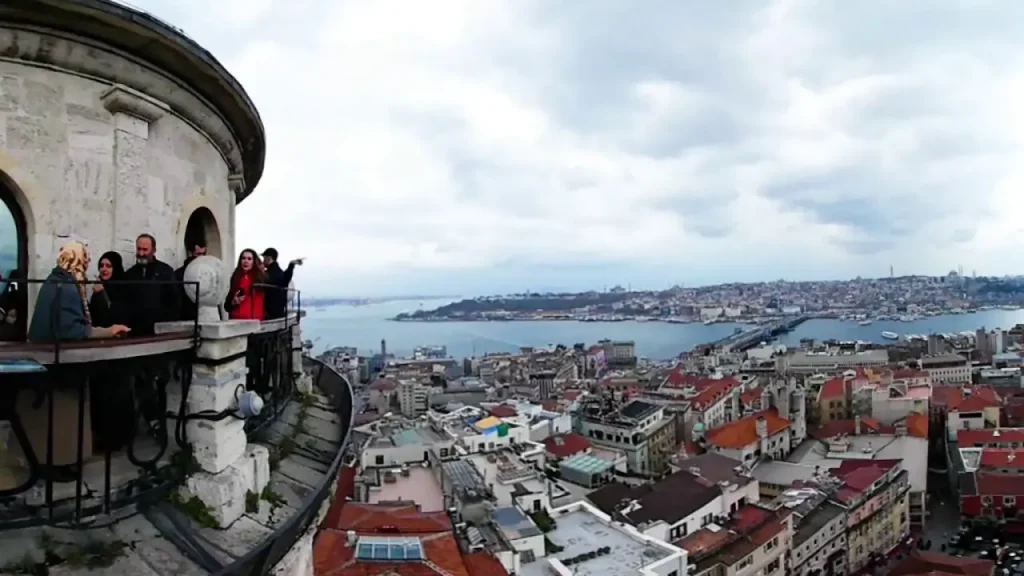
Galata Tower occasionally hosts special events, exhibitions, or performances. Before your visit, check the tower’s official website or local event listings to see if any unique experiences coincide with your trip.
Tip 10: Be Respectful of the Historic Site
Lastly, remember to be respectful of the historic site and follow any posted rules or guidelines. By doing so, you’ll help preserve the tower for future generations to enjoy.
History of Istanbul
Istanbul, known as Byzantium in ancient times, has a rich and complex history that spans thousands of years. The city has been a center of culture, commerce, and political power throughout its history, serving as the capital of three major empires: the Roman Empire, the Byzantine Empire, and the Ottoman Empire.
The earliest evidence of human settlement in the area dates back to around 3000 BC, during the Bronze Age. The Greeks established a colony on the site in the 7th century BC, and the city came to be known as Byzantium in the 4th century BC. In 324 AD, the Roman Emperor Constantine the Great chose Byzantium as the new capital of the Roman Empire, renaming the city Constantinople.

During the Byzantine Empire, Constantinople became a center of art, literature, and culture. It was also a hub of trade, connecting the Eastern and Western worlds through its strategic location between the Black Sea and the Mediterranean. The city was sacked by Crusaders in 1204, but it was rebuilt and continued to thrive as the capital of the Byzantine Empire until it fell to the Ottoman Turks in 1453.
Under the Ottomans, Istanbul became the capital of a vast and powerful empire that extended from Eastern Europe to the Middle East and North Africa. The city was transformed with the construction of grand mosques, palaces, and public buildings, including the iconic Blue Mosque and the Topkapi Palace. Istanbul also became a center of Islamic culture and scholarship, with numerous madrasas and other educational institutions established throughout the city.
After the collapse of the Ottoman Empire following World War I, Istanbul became the capital of the new Republic of Turkey in 1923. Under the leadership of Mustafa Kemal Atatürk, the city was modernized and Westernized, with new institutions and infrastructure built to bring Turkey into the modern era.
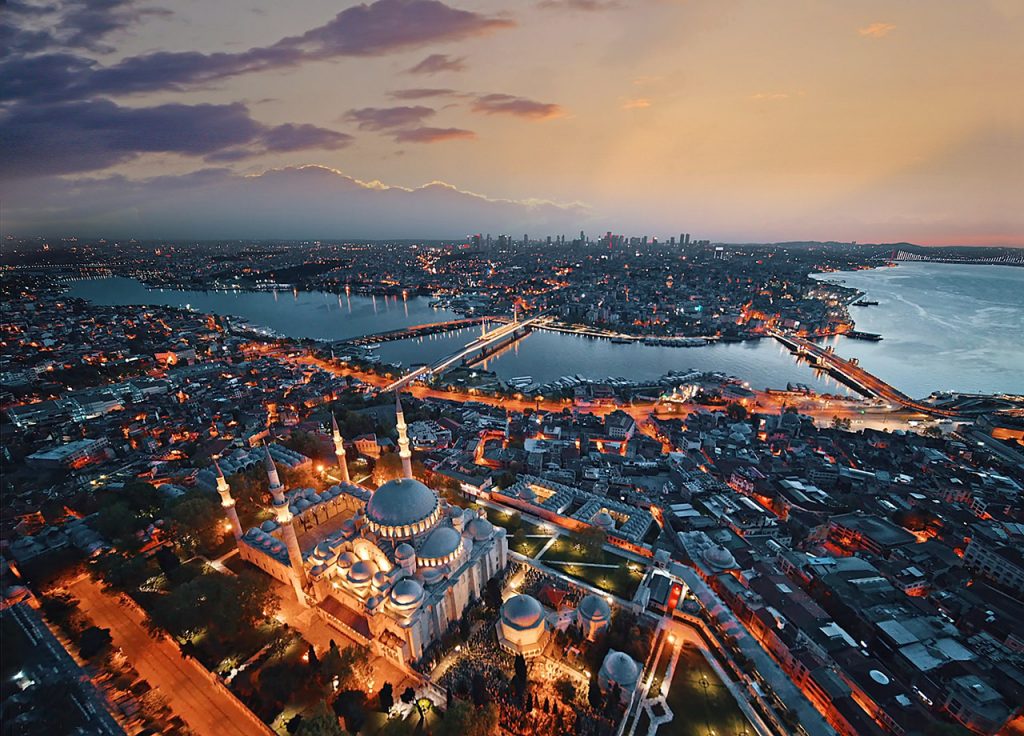
Today, Istanbul is a vibrant and cosmopolitan city that blends its rich history with modernity. Its landmarks, such as the Hagia Sophia, the Grand Bazaar, and the Bosphorus Bridge, attract millions of visitors each year. The city continues to be an important cultural and economic center, serving as a bridge between Europe and Asia.
Our Latest Video on Youtube
Hashtags: #GalataTower #Istanbul #Travel #History #Architecture
